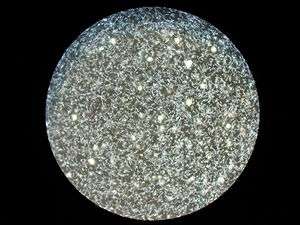Hepatomegaly
| Hepatomegaly | |
|---|---|
 | |
| Computerized tomography of hepatomegaly | |
| Classification and external resources | |
| Specialty | internal medicine |
| ICD-10 | R16..0 |
| ICD-9-CM | 789.1 |
| MedlinePlus | 003275 |
| Patient UK | Hepatomegaly |
Hepatomegaly is the condition of having an enlarged liver.[1] It is a non-specific medical sign having many causes, which can broadly be broken down into infection, hepatic tumours, or metabolic disorder. Often, hepatomegaly will present as an abdominal mass. Depending on the cause, it may sometimes present along with jaundice.[2]
Symptoms/signs
Symptoms having to do with hepatomegaly can include several, among them the individual may experience some weight loss, poor appetite and lethargy (jaundice and bruising may also be present)[2]
Causes

Among the causes of hepatomegaly are the following:
Infective
- Glandular fever (Infectious mononucleosis) [2]
- Hepatitis (A,B or C)[1]
- Liver abscess (pyogenic abscess)[2]
- Malaria[2]
- Amoeba infections[3]
- Hydatid cyst[4]
- Leptospirosis[5]
- Actinomycosis[6]
Neoplastic
Biliary
Metabolic
- Haemochromatosis[2]
- Cholesteryl ester storage disease[7]
- Porphyria[2]
- Wilson's disease[2]
- Niemann Pick disease[1]
- Non-alcoholic fatty liver disease.[2]
- Glycogen Storage Disease [1]
Drugs (and alcohol)
Congenital
- Hemolytic anemia[2]
- Sickle cell disease[2]
- Hereditary fructose intolerance [1]
Others
- Hunter syndrome (Spleen affected)[8]
- Zellweger's syndrome[9]
- Carnitine palmitoyltransferase I deficiency[10]
- Granulomatous: Sarcoidosis[11]
Mechanism
The mechanism of hepatomegaly consists of vascular swelling, inflammation (due to the various causes that are infectious in origin) and deposition of (1) non-hepatic cells or (2) increased cell contents (such due to iron in hemochromatosis or hemosiderosis and fat in fatty liver disease)[12]
Diagnosis
Suspicion of hepatomegaly indicates a thorough medical history and physical examination, wherein the latter typically includes an increased liver span. Blood tests should be done, importantly liver-function series, which will give a good impression of the patient's broad metabolic picture.
A complete blood test can help distinguish intrinsic liver disease from extrahepatic bile-duct obstruction.[13] An ultrasound of the liver can reliably detect a dilated biliary-duct system,[14] it can also detect the characteristics of a cirrhotic liver,.[15]Computerized tomography (CT) can help to obtain accurate anatomical information, in individuals with hepatomegaly.[16]
Treatment

Treatment of hepatomegaly will vary depending on the cause of the liver enlargement and hence accurate diagnosis is the primary concern. In the case of auto-immune liver disease, prednisone and azathioprine may be used for treatment.[17]
In the case of lymphoma the treatment options include single-agent (or multi-agent) chemotherapy and regional radiotherapy, also surgery may be an option in specific situations.Meningococcal group C conjugate vaccine are also used in some cases.[18]
In primary biliary cirrhosis ursodeoxycholic acid helps the bloodstream remove bile which may increase survival in some affected individuals.[19]
See also
References
- 1 2 3 4 5 6 7 8 9 "Hepatomegaly: MedlinePlus Medical Encyclopedia". www.nlm.nih.gov. Retrieved 2016-02-27.
- 1 2 3 4 5 6 7 8 9 10 11 12 13 14 15 16 "Hepatomegaly. Read about Hepatomegaly (enlarged liver) | Patient". Patient. Retrieved 2016-02-27.
- ↑ Lang, Florian (2009-03-19). Encyclopedia of Molecular Mechanisms of Disease: With 213 Tables. Springer Science & Business Media. p. 824. ISBN 9783540671367.
- ↑ Prevention, CDC - Centers for Disease Control and. "CDC - Echinococcosis - Resources for Health Professionals". www.cdc.gov. Retrieved 2016-03-11.
- ↑ "Leptospirosis (Weil's Disease) | Doctor | Patient". Patient. Retrieved 2016-03-11.
- ↑ Banfalvi, Gaspar (2013-10-16). Homeostasis - Tumor - Metastasis. Springer Science & Business Media. p. 145. ISBN 9789400773356.
- ↑ "Cholesteryl Ester Storage Disease - NORD (National Organization for Rare Disorders)". NORD (National Organization for Rare Disorders). Retrieved 2016-03-11.
- ↑ "Hunter's Syndrome. MPS II information; symptoms | Patient". Patient. Retrieved 2016-03-11.
- ↑ "OMIM Entry - # 214100 - PEROXISOME BIOGENESIS DISORDER 1A (ZELLWEGER); PBD1A". www.omim.org. Retrieved 2016-03-11.
- ↑ "CPT I deficiency". Genetics Home Reference. 2016-03-07. Retrieved 2016-03-11.
- ↑ "Sarcoidosis | Doctor | Patient". Patient. Retrieved 2016-03-11.
- ↑ Dennis, Mark; Bowen, William Talbot; Cho, Lucy (2012-01-01). Mechanisms of Clinical Signs. Elsevier Australia. p. 469. ISBN 9780729540759.
- ↑ Goldman, Lee; Schafer, Andrew I. (2015-04-21). Goldman-Cecil Medicine. Elsevier Health Sciences. p. 991. ISBN 9780323322850.
- ↑ Meacock, L M; Sellars, M E; Sidhu, P S (2010-07-01). "Evaluation of gallbladder and biliary duct disease using microbubble contrast-enhanced ultrasound". The British Journal of Radiology. 83 (991): 615–627. doi:10.1259/bjr/60619911. ISSN 0007-1285. PMC 3473688
 . PMID 20603412.
. PMID 20603412. - ↑ Murray, Karen F.; Horslen, Simon (2013-12-11). Diseases of the Liver in Children: Evaluation and Management. Springer Science & Business Media. p. 199. ISBN 9781461490050.
- ↑ Mirvis, Stuart E.; Soto, Jorge A.; Shanmuganathan, Kathirkamanathan; Yu, Joseph; Kubal, Wayne S. (2014-08-19). Problem Solving in Emergency Radiology. Elsevier Health Sciences. p. 442. ISBN 9781455758395.
- ↑ "Cirrhosis: Practice Essentials, Overview, Epidemiology".
- ↑ "Non-Hodgkin's Lymphoma | Doctor | Patient". Patient. Retrieved 2016-03-11.
- ↑ "Primary biliary cirrhosis: MedlinePlus Medical Encyclopedia". www.nlm.nih.gov. Retrieved 2016-03-12.
Further reading
- Hoffmann, Georg F.; Zschocke, Johannes; Nyhan, William L. (2009-11-21). Inherited Metabolic Diseases: A Clinical Approach. Springer Science & Business Media. ISBN 9783540747239.
- Kim, Sun Bean; Kim, Do Kyung; Byun, Sun Jeong; Park, Ji Hye; Choi, Jin Young; Park, Young Nyun; Kim, Do Young (2015-12-01). "Peliosis hepatis presenting with massive hepatomegaly in a patient with idiopathic thrombocytopenic purpura". Clinical and Molecular Hepatology. 21 (4): 387–392. doi:10.3350/cmh.2015.21.4.387. ISSN 2287-2728. PMC 4712167
 . PMID 26770928.
. PMID 26770928.